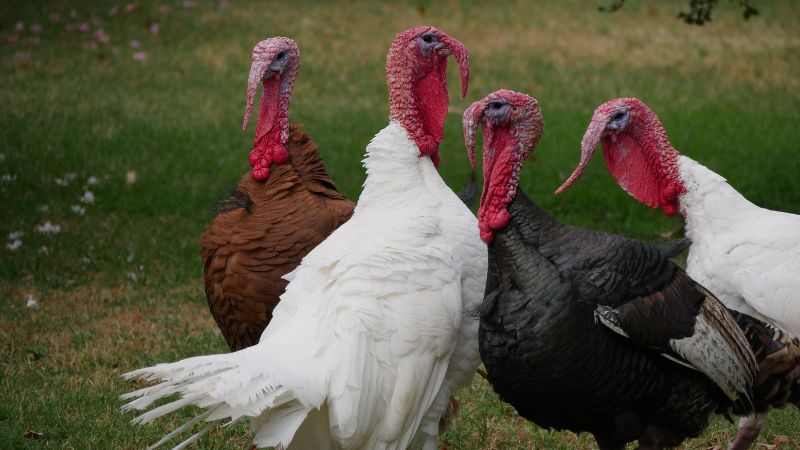How Much Does a Turkey Cost? All Costs Revealed

When discussing the cost of a turkey, most people likely think about buying a fully-grown bird from the grocery store for their Thanksgiving dinner. However, the journey from poult to turkey on the dinner table is fascinating and can involve various costs and considerations.
Raising turkeys from poults, or baby turkeys, involves careful planning, attention to detail, and a significant investment of time and money. From selecting the right breed and ensuring proper nutrition to providing adequate shelter and protecting against predators, there are many factors to consider when raising poults to maturity. In this article, we’ll take a closer look at the costs and expenses involved in raising turkeys from poults, so you can better understand the work that goes into producing one of the most iconic dishes of the holiday season.
Which Factors Affect the Cost of a Turkey?
Like buying a fully grown turkey, various factors can affect the cost of raising a poult turkey. One of the most important factors is the breed of the poult, with some breeds being more expensive than others due to factors such as rarity, demand, or unique traits.
Another significant factor affecting the cost of raising a poult turkey is the quality and quantity of the feed provided. Turkeys require a specialized diet that is higher in protein than what is typically fed to chickens, and providing high-quality feed can help ensure healthy growth and development. However, the higher-quality feed can also be more expensive, impacting the overall cost of raising a poult turkey.
The location and season can also impact the cost of raising a poult turkey. For example, additional heating may be required in colder climates to keep the turkeys warm, which can increase energy costs.
Additionally, during certain times of the year, such as in the lead-up to Thanksgiving, demand for turkeys may increase, leading to higher prices for poults and related supplies. Individuals can make informed decisions about their poultry-raising endeavors and budget accordingly by understanding the various factors that can impact the cost of raising a poult turkey.
Cost of the Turkey Poult Due to the Role of Breed and Age
When determining the cost of raising a poult, two key factors to consider are the breed and age of the bird. Different breeds of turkeys can have varying costs, with some being more expensive due to factors such as rarity, demand, or unique characteristics. For example, Broad Breasted Bronze and Narragansett breeds are relatively common and have lower average costs, while Black Spanish and Blue Slate breeds are rarer and can command higher prices.
The age of the poult can also play a role in determining its cost. Younger poults are typically less expensive than older ones, as they require less food and care in the early stages of their development.
However, older poults may have a higher survival rate and may be more likely to thrive and reach maturity, ultimately leading to a better return on investment.
Ultimately, the breed and age of the poult are just two factors to consider when determining the cost of raising turkeys. Other factors, such as feed quality, housing, and veterinary care, should also be considered to get a more accurate picture of the total cost of raising poults to maturity. By understanding the various factors that impact poult costs, individuals can make informed decisions about their poultry-raising endeavors and budget accordingly.
| Poult Breed | Average Cost (Day-Old) | Average Cost (4-Week-Old) | Average Cost (8-Week-Old) |
| Broad Breasted Bronze | $2-4 | $5-8 | $15-20 |
| Narragansett | $3-5 | $7-10 | $20-25 |
| Bourbon Red | $4-6 | $8-12 | $25-30 |
| Royal Palm | $5-7 | $10-15 | $30-35 |
| Black Spanish | $6-8 | $12-18 | $35-40 |
| Blue Slate | $7-9 | $15-20 | $40-45 |
What Services Impact Turkey Poult Cost?
In addition to breed and age, several other services can impact the overall cost of raising poults. One of the most important services is veterinary care. Poults are susceptible to various diseases and health issues, and regular veterinary check-ups can help prevent and treat these issues. However, veterinary care can be expensive, and the cost can vary depending on the provider and the extent of the services required.
Another service that can impact poult costs is transportation. If poults need to be transported from a hatchery or supplier to a farm, there may be additional costs for shipping or delivery. The cost of transportation can vary depending on factors such as distance, shipping method, and the number of poults being transported.
Finally, housing is another service that can impact the cost of raising poults. Poults require a warm, dry, and secure environment to thrive, and setting up an appropriate housing facility can be costly. Additionally, ongoing costs such as heating and bedding can add to the overall cost of raising poults.
By considering these additional services and associated costs, individuals can make more informed decisions about their poultry-raising endeavors and budget accordingly.
| Service | Average Cost |
| Veterinary Care | $50-100 per check-up |
| Transportation | $0.50-1 per mile |
| Housing | $200-500+ (depending on size and materials) |
| Heating | $50-100 per month |
| Bedding | $20-30 per month |
Other Expenses of Raising Turkey Poults
- Food: Feed is often the largest ongoing expense when raising poults. The type of feed and amount needed will depend on the breed, age, and weight of the poults, as well as the specific nutritional needs of the birds. Choosing a high-quality feed that provides all the necessary nutrients for healthy growth and development is important.
- Ventilation: Proper ventilation is essential to maintain good air quality and prevent the buildup of harmful gases such as ammonia. Additional ventilation systems may be required for larger coops or for hot and humid climates, which can increase the overall cost of raising poults.
- Lighting: Providing adequate lighting is important for promoting healthy growth and development in poults. This may involve purchasing additional lighting equipment or installing windows in the coop, which can add to the overall cost.
- Pest control: Pests such as mites, lice, and rodents can be problematic in poultry coops and negatively impact poult health and productivity. Additional pest control measures, such as using insecticides or rodent traps, may be required, which can increase the overall cost of raising poults.
- Water treatment: The water quality provided to poults can impact their health and growth. Water treatment measures such as filtration or chlorination may be necessary to ensure safe and clean water, which can add to the overall cost.
| Additional Expense | Description | Average Cost |
| Ventilation | Installation and maintenance of ventilation systems | $100 – $500 |
| Lighting | Purchase of lighting equipment or installation of windows | $50 – $200 |
| Pest control | Use of insecticides or rodent traps | $20 – $100 |
| Water treatment | Filtration or chlorination of water | $50 – $150 |
| Food | Purchase of feed and supplements | $150 – $300 per 50-pound bag |
Impact of Location and Climate on Poult Cost
The location and climate in which turkey poults are being raised can also impact their price. Factors such as the cost of land, labor, and utilities can vary widely depending on the region, and these costs can ultimately be reflected in the price of poults. Additionally, climate can impact the cost of raising poults by affecting their health and welfare. Hot and humid climates, for example, may require additional cooling equipment or ventilation systems, which can add to the overall cost.
In some regions, the demand for turkey poults may also impact their price. Areas with a high concentration of turkey farms or a great demand for turkey products may have higher poults prices due to buyers’ competition.
Conversely, areas with lower demand for turkey products may have lower prices for poults.
When considering the impact of location and climate on poult price, it’s important to consider the specific needs of the birds and ensure that their health and welfare are not compromised to save on costs. Ultimately, the cost of raising turkey poults will vary depending on a wide range of factors, and individuals should carefully evaluate these factors when budgeting for their turkey-raising venture.
| Region | Average Cost | Average Cost per Pound |
| Northeast | Higher costs due to higher cost of living and land prices | $1.50 – $2.00 per pound |
| Midwest | Moderate cost, generally lower than the Northeast and West | $1.20 – $1.50 per pound |
| South | Lower cost due to lower cost of living and land prices | $1.00 – $1.30 per pound |
| West | Higher costs due to higher cost of living and land prices | $1.50 – $2.00 per pound |
Raising Turkey Poult, is it Worth it?
Whether raising turkey poults is financially worthwhile will depend on various factors, including the cost of inputs, the price of finished birds, and the time and labor required to raise them. It’s important to carefully evaluate these factors before starting a turkey-raising venture.
While raising turkey poults can be profitable for some, it’s not a get-rich-quick scheme. It typically requires a significant investment in equipment, feed, and labor, and success depends on factors such as market demand, competition, and the overall health and welfare of the birds.
Raising turkey poults can offer several benefits beyond financial gains, such as raising your own food and connecting with the natural world. Whether raising turkey poults is financially worth it will depend on your circumstances and goals. It’s important to carefully consider these factors before making any decisions.

